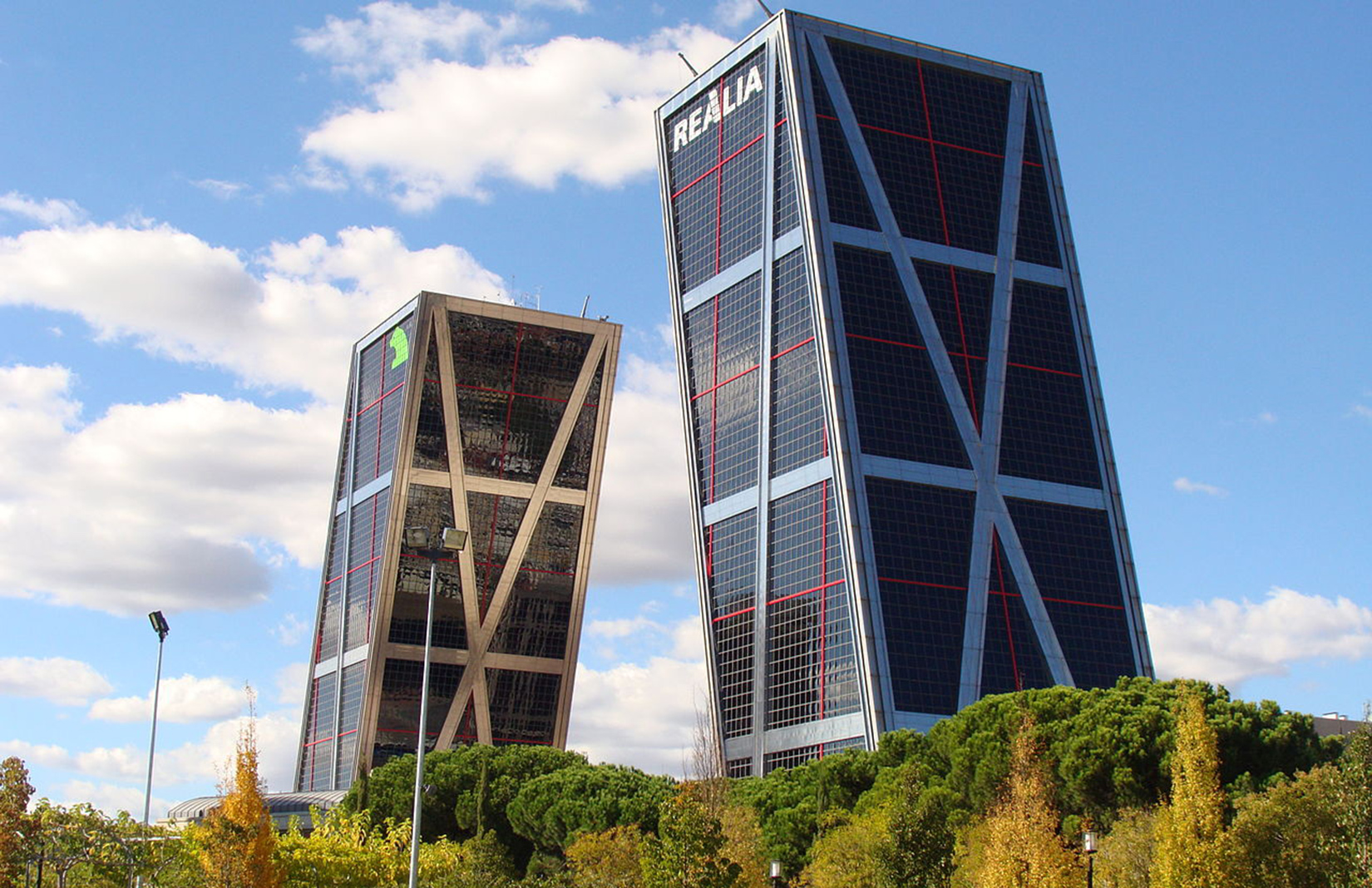Madrid has a shorter architectural history than many European capitals. Although it has been inhabited since prehistoric times and was a Moorish stronghold in the 9th century, it remained a provincial town until Philip II moved the royal court to the city in 1561, making it the de facto capital of Spain.
The city grew rapidly during the 17th century but its serious architecture credentials were really earned in the 1900s under Charles III, who was responsible for commissioning many of its finest historical buildings.
Madrid’s beauty emerges from this delayed and sometimes haphazard growth. Unlike in some cities – where an ancient heart is surrounded by rings of ever more contemporary buildings – to walk through the centre of Madrid is to walk through its history: decorative 18th century palaces sit alongside imposing 19th-century buildings, Art Deco skyscrapers, concrete Modernist blocks and 21st-century glass-and-steel interventions.
Architecture buffs will find plenty to admire in this passionate and vivacious city. Here are a handful of highlights.
Plaza Mayor
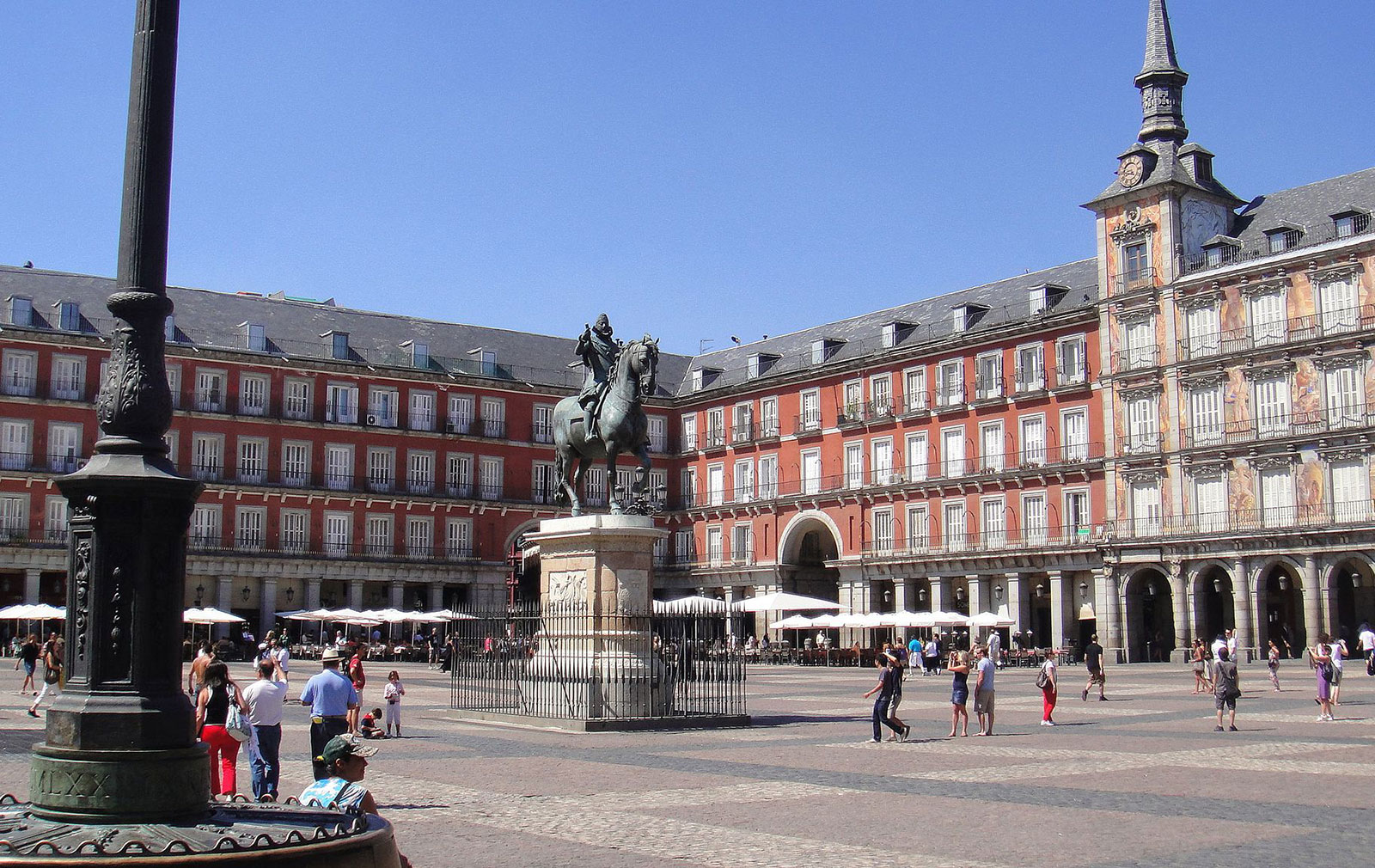
When Philip II moved his court to Madrid, he also began to develop the city. His approach can best be seen today in Plaza Mayor, designed by Juan de Herrera and Juan Gómez de Mora. This grand public space, with its grey slate spires and brick-red facades that are typical of the Castilian Baroque style, is also characterised by symmetry and austerity.
Royal Palace
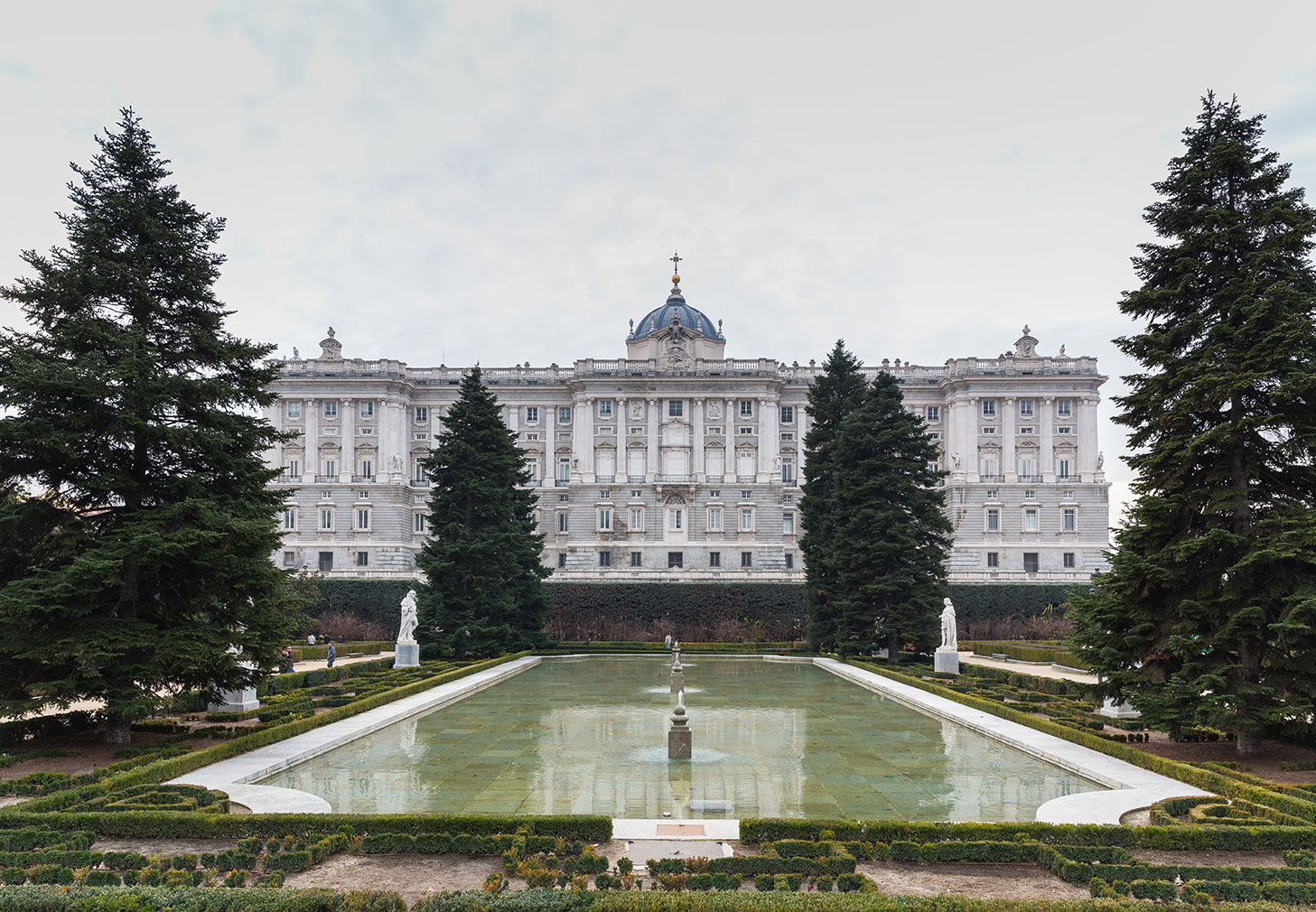
Spain dominated Europe politically, culturally and militarily between the 16th and 18th centuries. The Royal Palace, designed in a French style to reflect the tastes of the Bourbon King Philip V and completed in 1755, illustrates this wealth and power. At 135,000 sq m it has 3,418 rooms and is the largest royal palace in Europe. Its interiors feature paintings by artists including Caravaggio and Velazquez, as well as notable collections of silver, porcelain and furniture.
Paseo del Prado
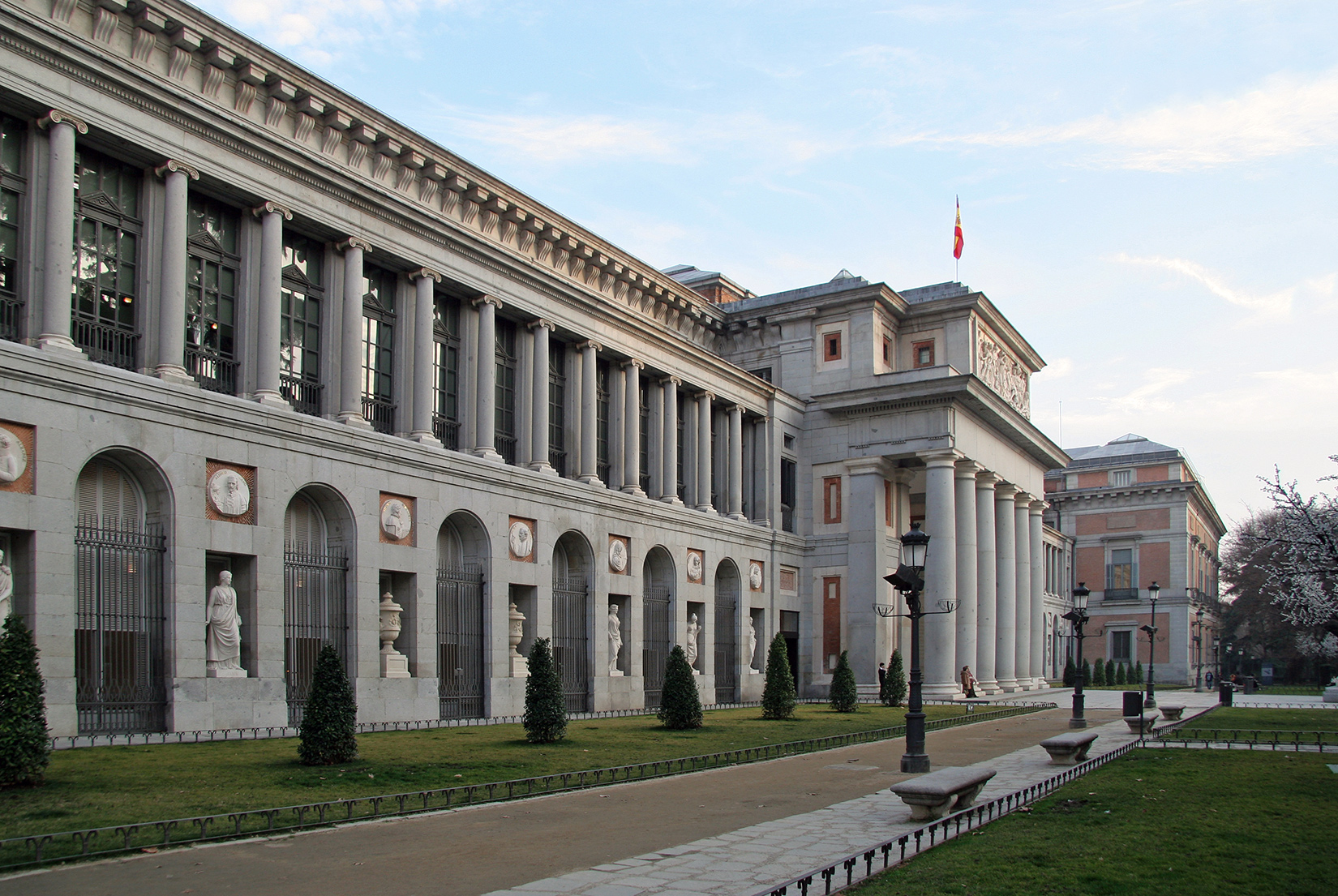
Originally a place for leisure on the outskirts of the city, this tree-lined avenue now sits in the city centre, surrounded by gardens and decorated with neoclassical statues. Conceived by King Charles III to hold Spain’s cultural and scientific institutions, it remains a cultural hub to this day, home to three of the country’s largest art museums including the Prado (pictured), designed by architect Juan de Villanueva in 1785.
Crystal Palace
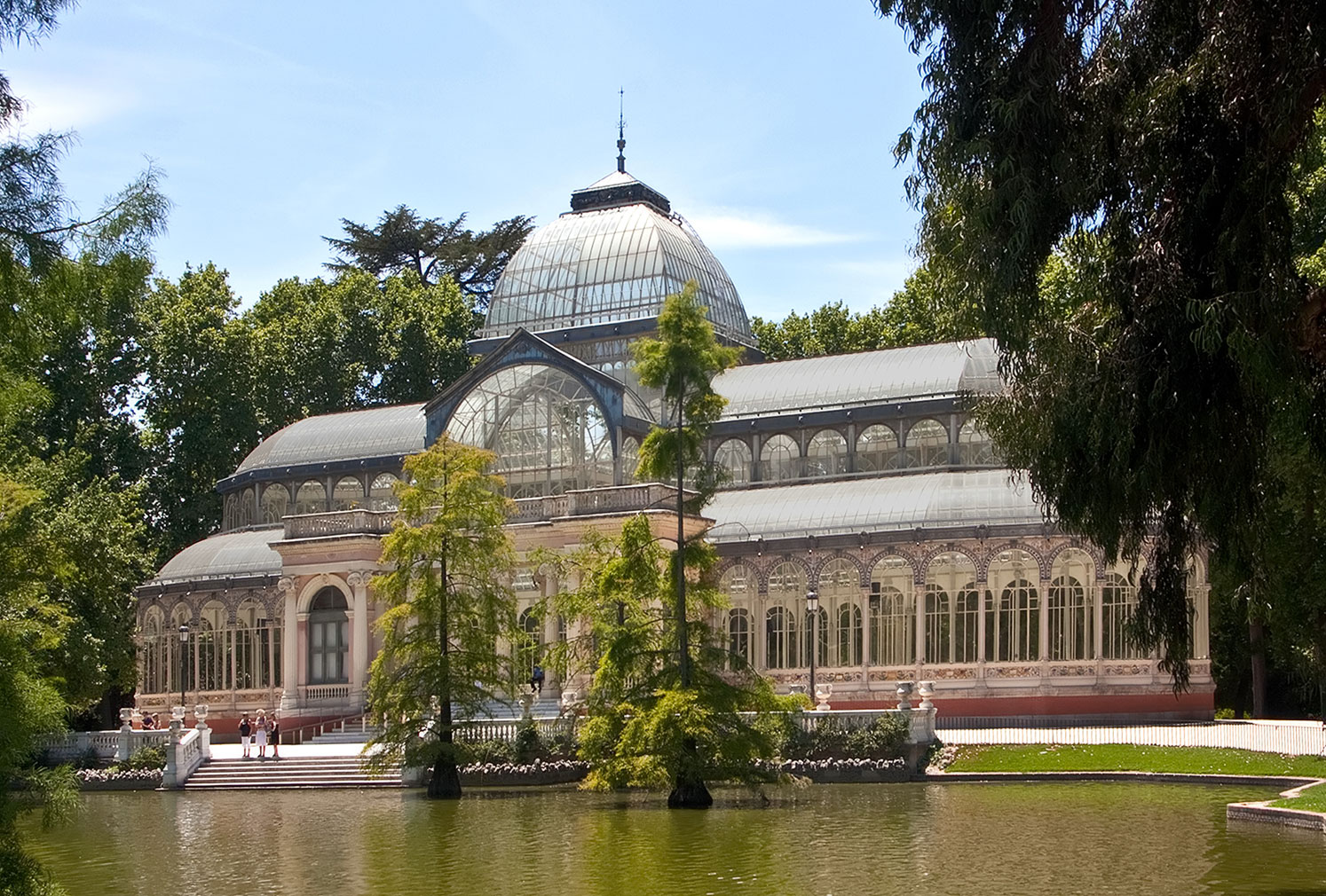
Designed by architect Ricardo Velázquez Bosco and set within Buen Retiro, one of the city’s largest parks, the Crystal Palace is made almost entirely of glass, set in an iron framework on a brick base decorated with ceramics. It took less than five months to build and was completed in 1887. Originally designed as a greenhouse to display exotic plants, today it serves as an exhibition space.
Atocha Station
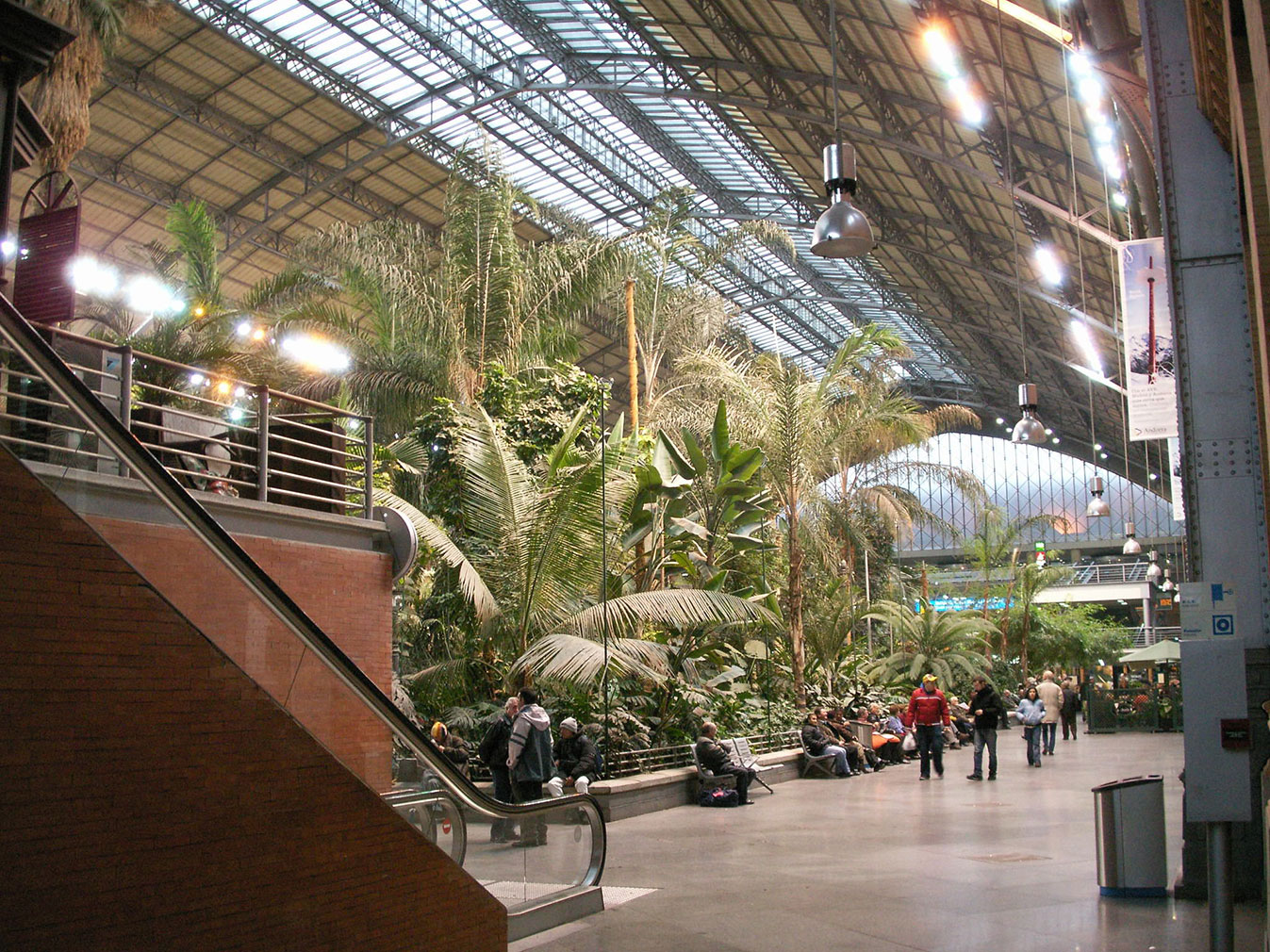
Architect Alberto de Palacio y Elissague collaborated with Gustave Eiffel to create the wrought iron, Renewal-style Atocha Station. The building as it stands today opened in 1892 and reflects the architectural innovations made possible by the industrial revolution, in particular the advance in materials such as iron, steel and glass. Inside, a mid-1990s renovation saw a disused concourse replaced by a 4,000sq m tropical garden.
Palacio de Cibeles
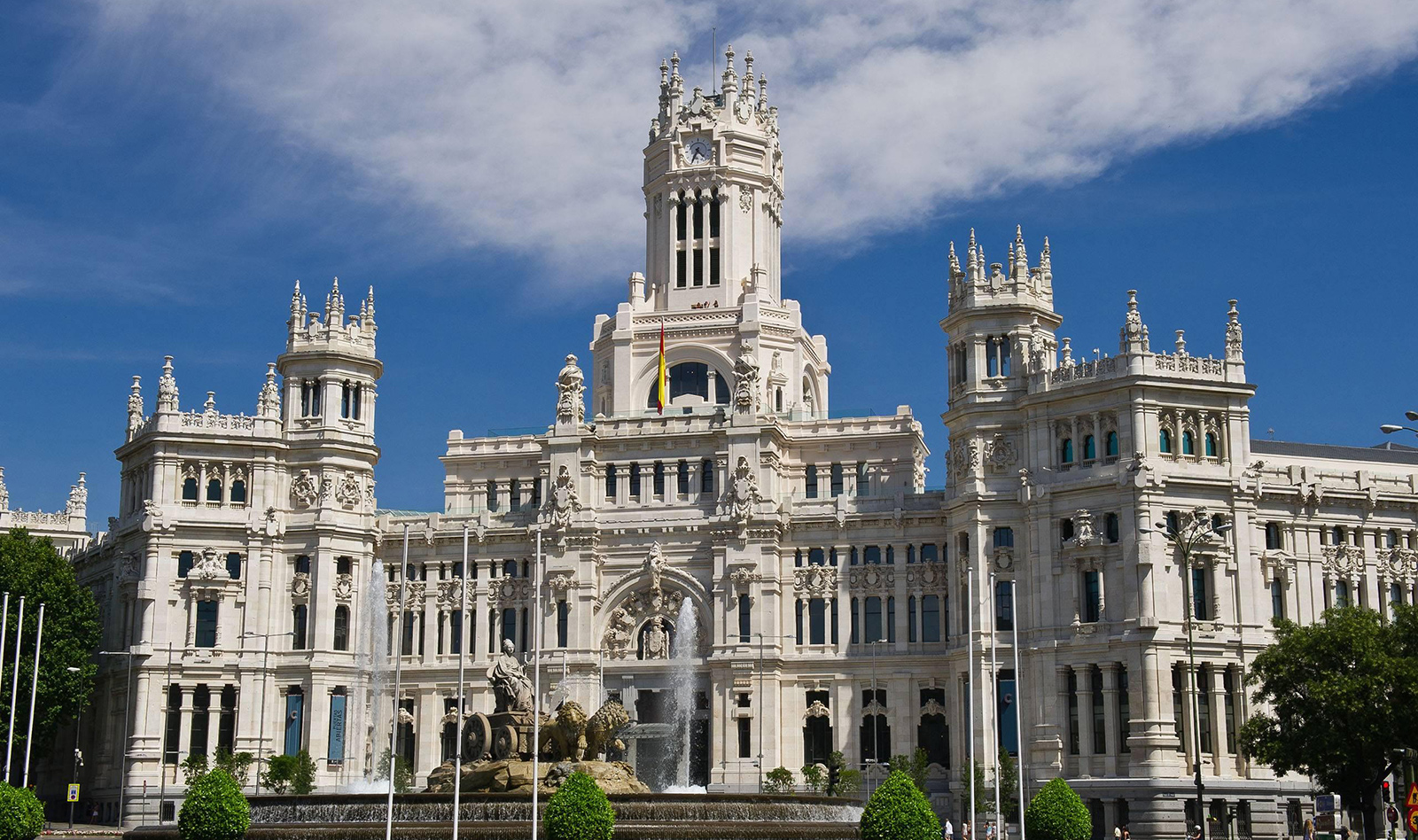
Built in 1909 by Antonio Palacios – originally as the headquarters of the country’s post office but now the Madrid City Hall – this statuesque building mixes regional Spanish influences with a Gothic-revival style. Interior renovations by Arquimatica in 2010 saw original features restored by hand, including lamps, furniture, marble floors, brass fittings and tiles. Open to the public, the building is one of the city’s key landmarks.
Telefónica Building
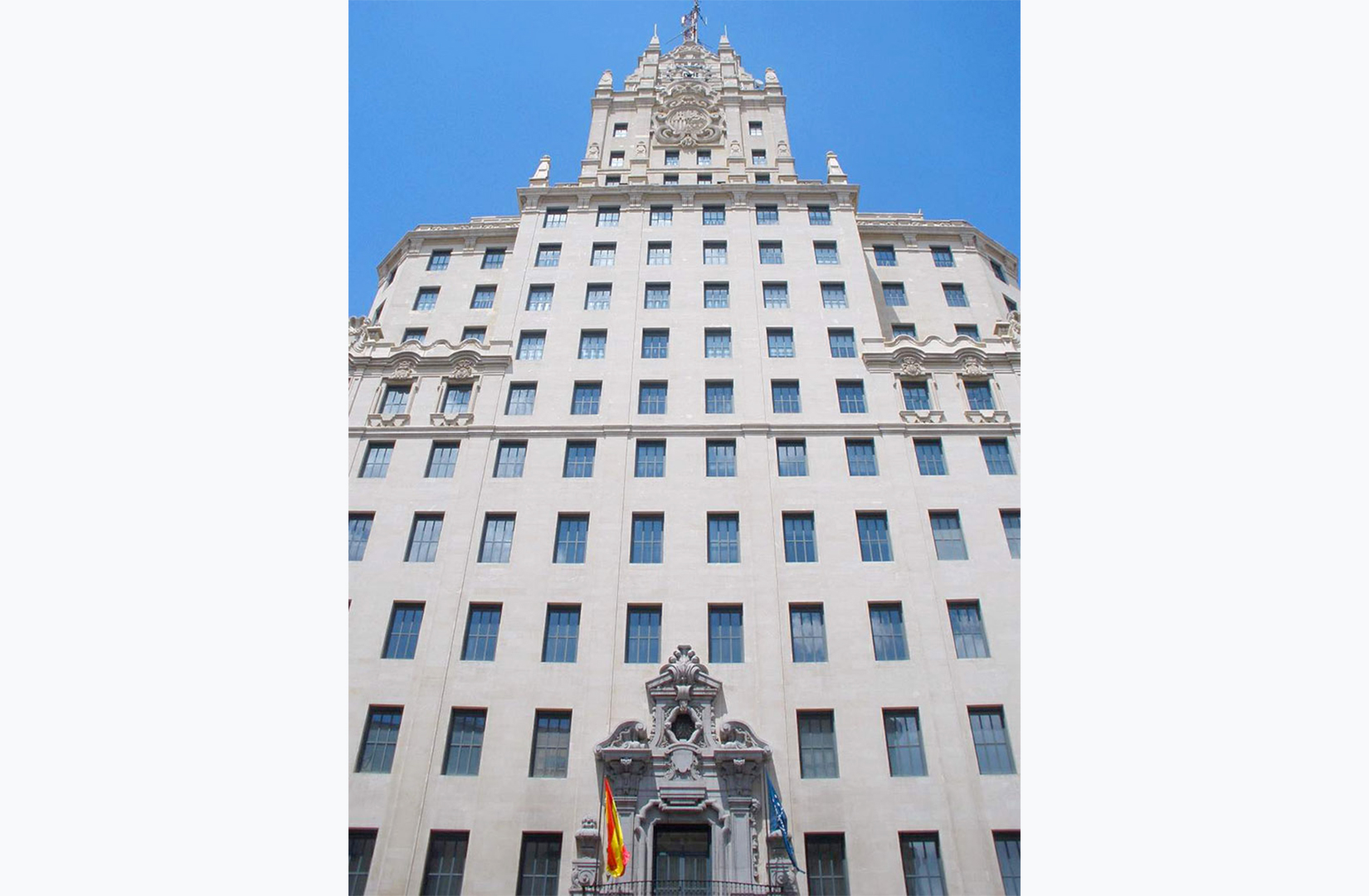
This tower, built in 1929 for the Spanish telecommunications company Telefónica, has a distinctly north-American feel to it. Designed by US architect Lewis S Weeks working with Ignacio de Cárdenas, the 88m high building was one of the first skyscrapers in Europe. During the Spanish Civil War it was used as an observation post by Republican forces and by foreign press including Ernest Hemingway.
Santa Ana church
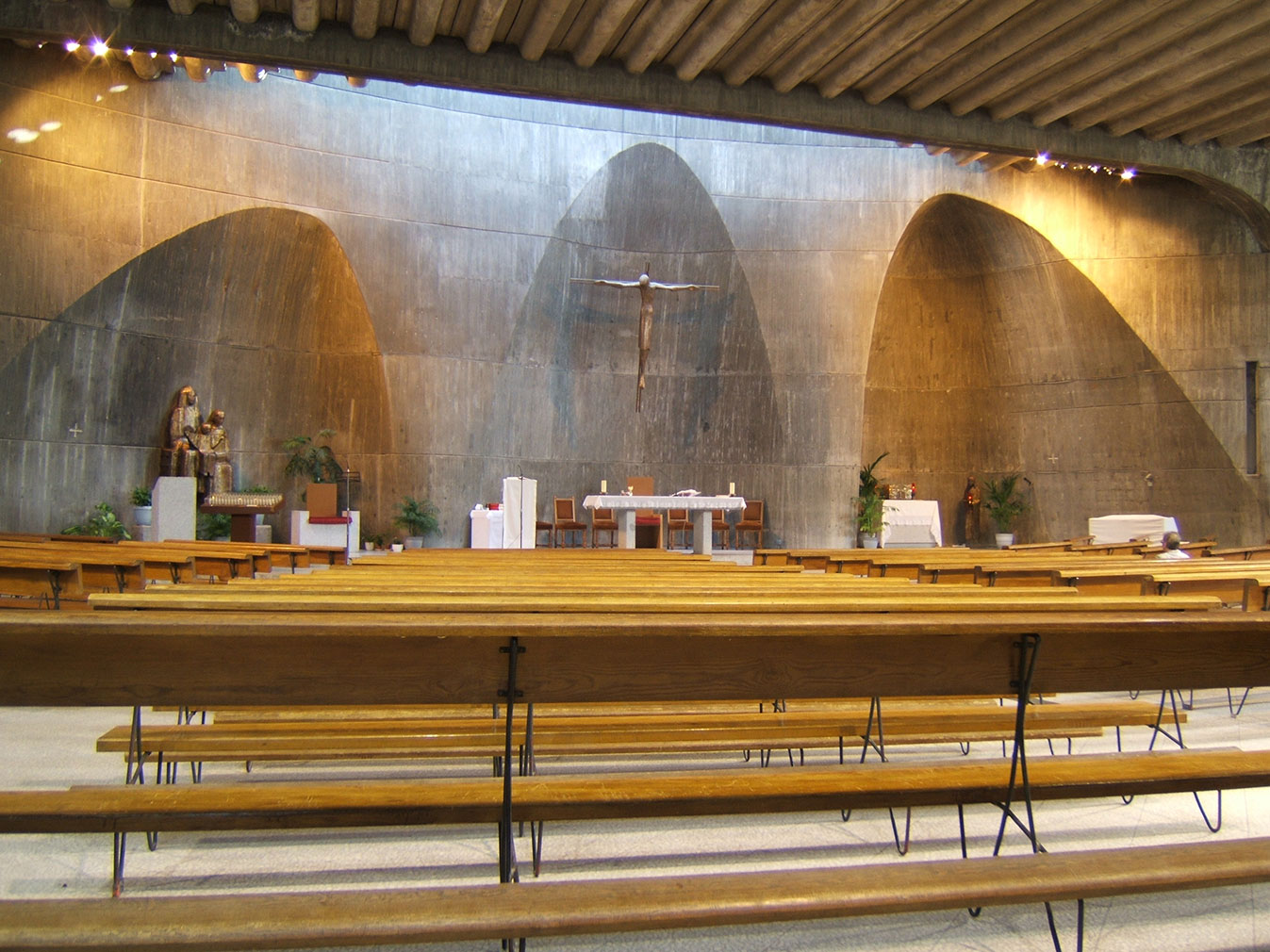
In a strongly Catholic country like Spain, it would be remiss not to include a church on a list of the capital’s significant structures. This one, designed by Miguel Fisac in 1965, is far from typical though. Fisac was one of the boldest Spanish Modernist architects and experimented with concrete at Santa Ana, creating curved organic shapes and a cave-like feel. The ribbed concrete roof mirrors the placement of the pews, and natural light falls on the altar and gently illuminates the space.
Torres Blancas
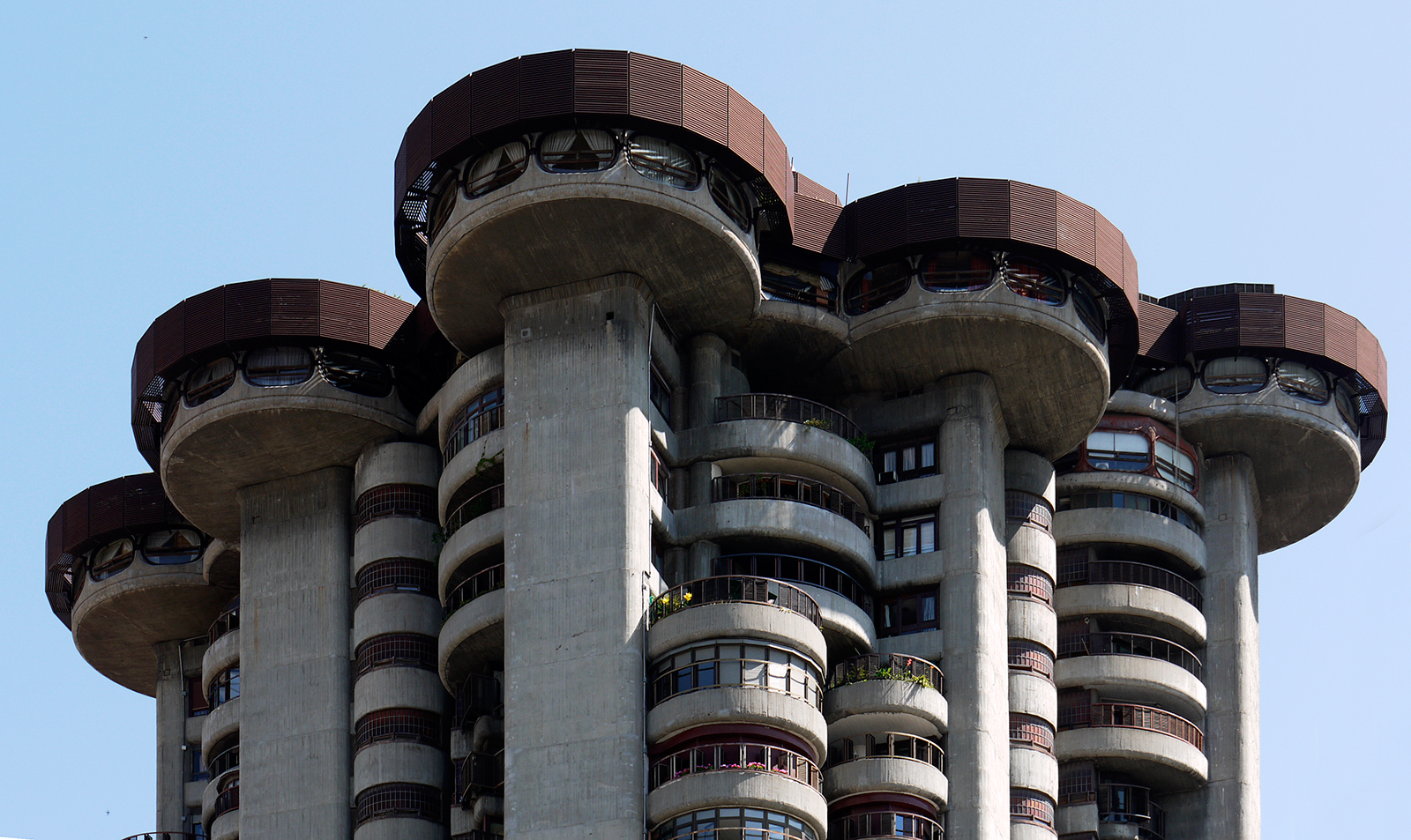
Designed by Modernist architect Francisco Javier Sáenz de Oiza and completed in 1969, this residential tower is one of the most complicated and innovative concrete structures of its time. Cylindrical, rather than rectangular, the tower is organically inspired, with semi-circular balconies and a large circular roof, which houses a communal rooftop pool.
Gate of Europe
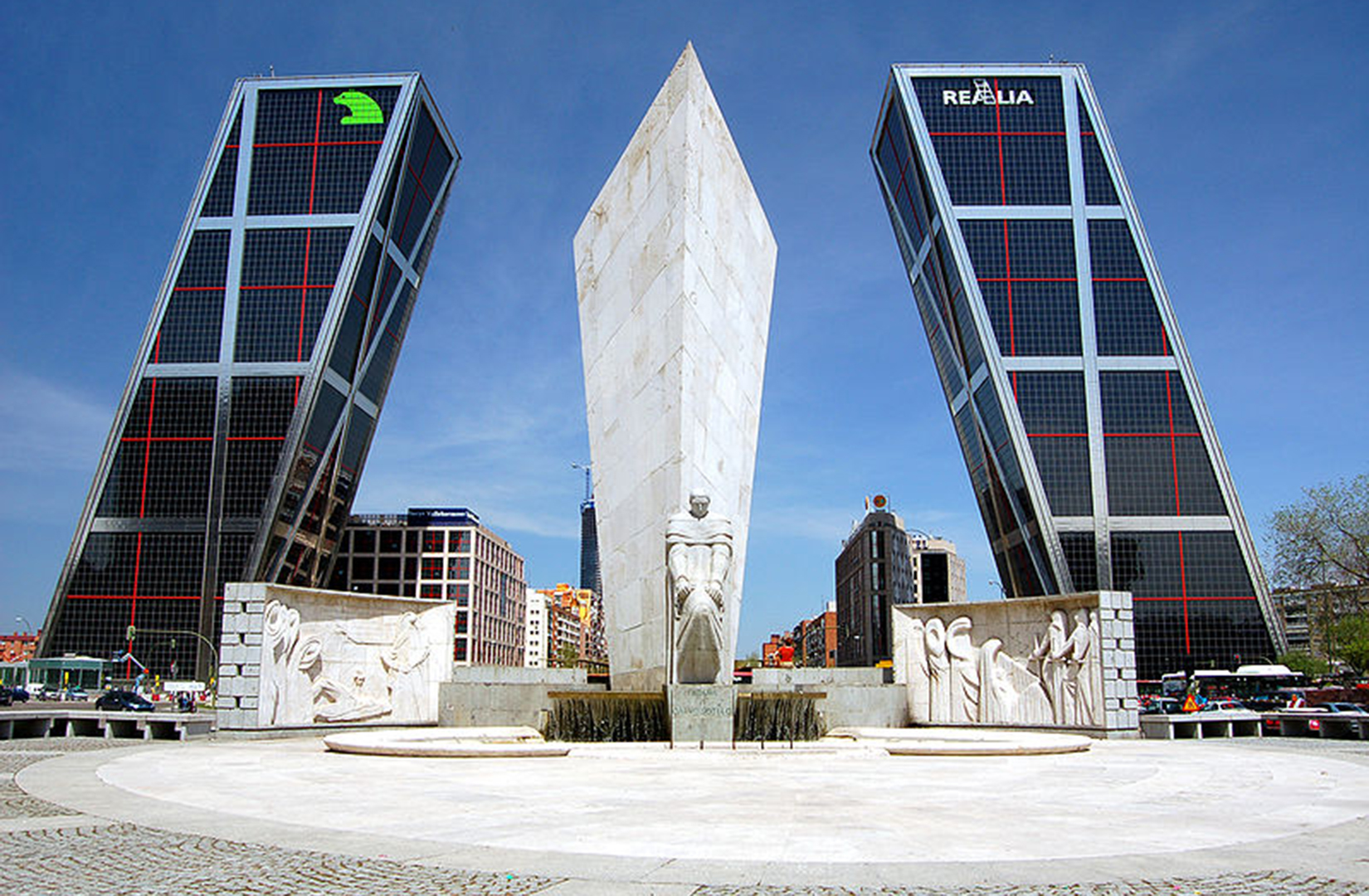
Among the most emblematic buildings in Madrid, the twin office towers known as Puerta de Europa were the world’s first inclined skyscrapers. Created by Philip Johnson and John Burgee, the inward leaning design emanates from a problem: in order to enable a subway interchange, the buildings needed to be set back from the street, which Johnson and Burgee saw as an opportunity to explore an unconventional design.
Madrid Barajas International Airport Terminal 4
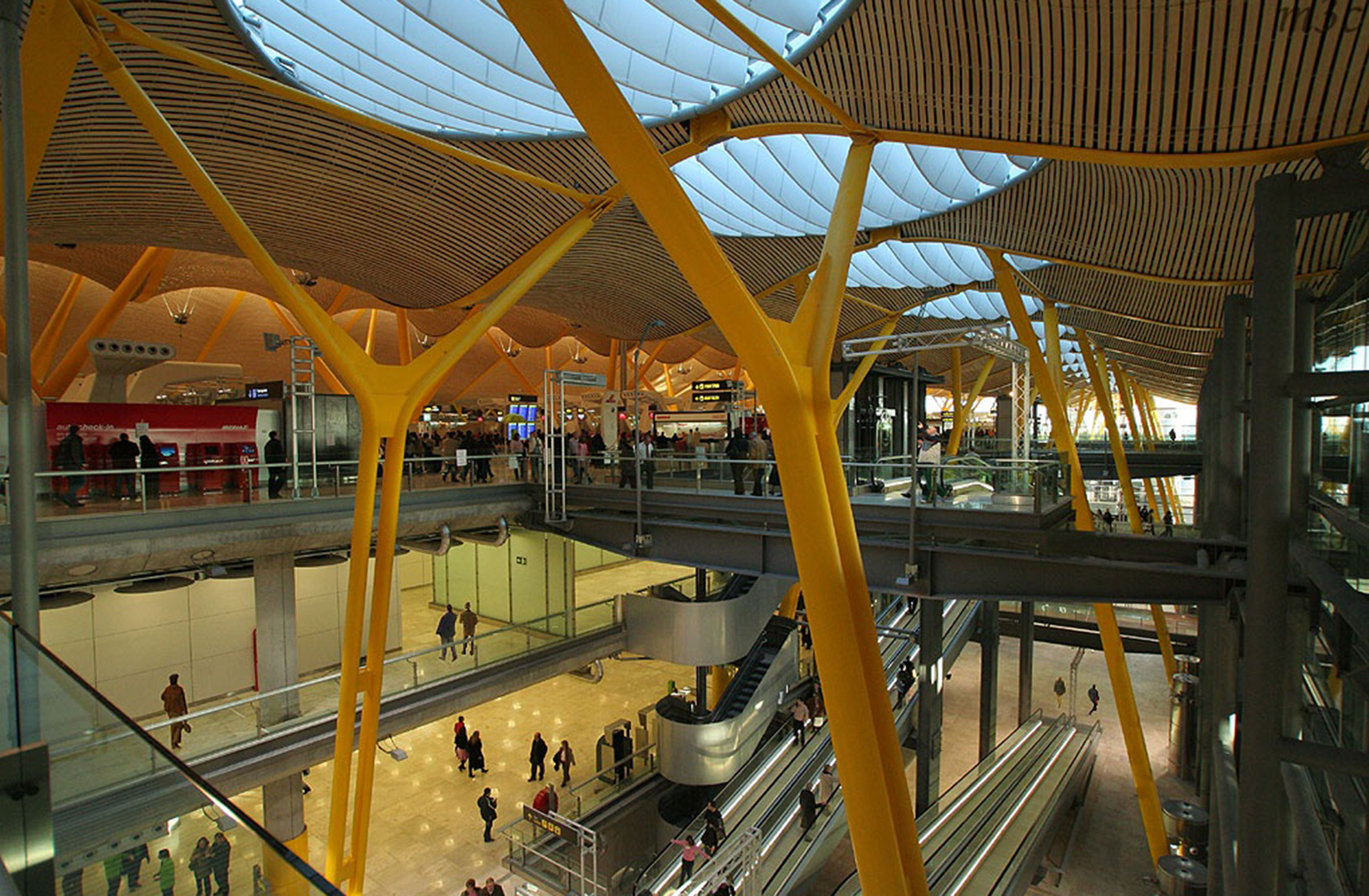
If you arrive into Madrid’s International Terminal 4, your architecture tour starts when you get off the the plane. The terminal, by Richard Rogers and Antonio Lamela, was the 2006 Stirling prize winner and, even 10 years later, the space is soothing, light-filled and simple to navigate. It features an undulating roof, subtle changes in colour and large open voids that impart a sense of space.
Reina Sofía Museum extension

Clad in a glossy red, lacquered façade, the Jean Nouvel-designed extension at Madrid’s contemporary art gallery Reina Sofia was completed in 2005. This curvaceous and striking addition also manages to complement the original museum buildings – Nouvel is quoted as saying he wanted to create a structure that would sit ‘in the shadow’ of the original. The extension, which also includes a large café and a public square, invites public use.
Mirador Building
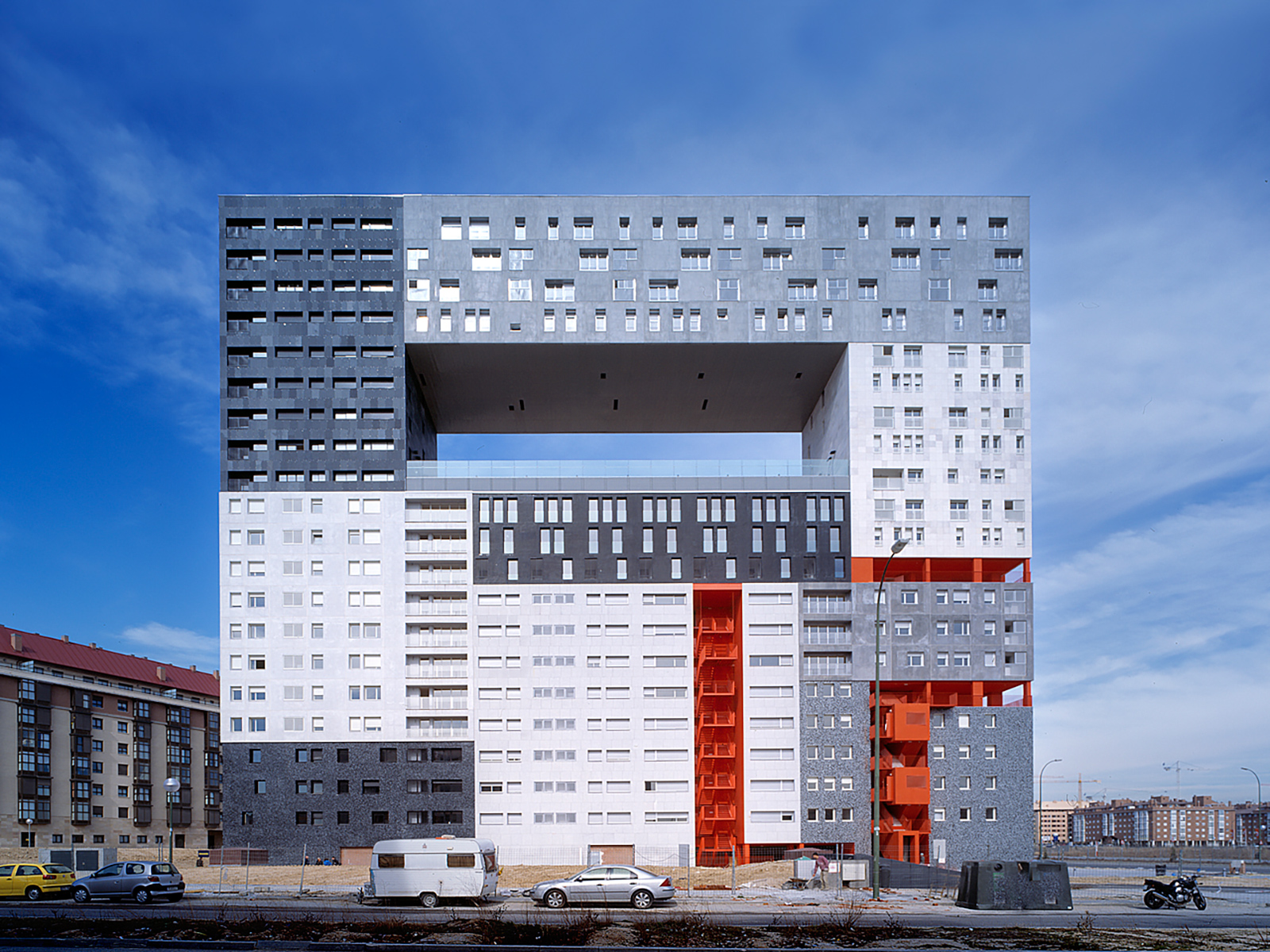
Completed in 2005 at the height of the Spanish real estate boom, Mirador by Dutch architects MVRDV stands out as a lasting architectural statement within the sea of otherwise uniform housing blocks that fill the new neighbourhoods on the outskirts of Madrid. Home to 156 apartments, it features a large lookout space, 40 metres above the ground, which has a communal garden and frames the distant Guadarrama Mountains.
Museo ABC
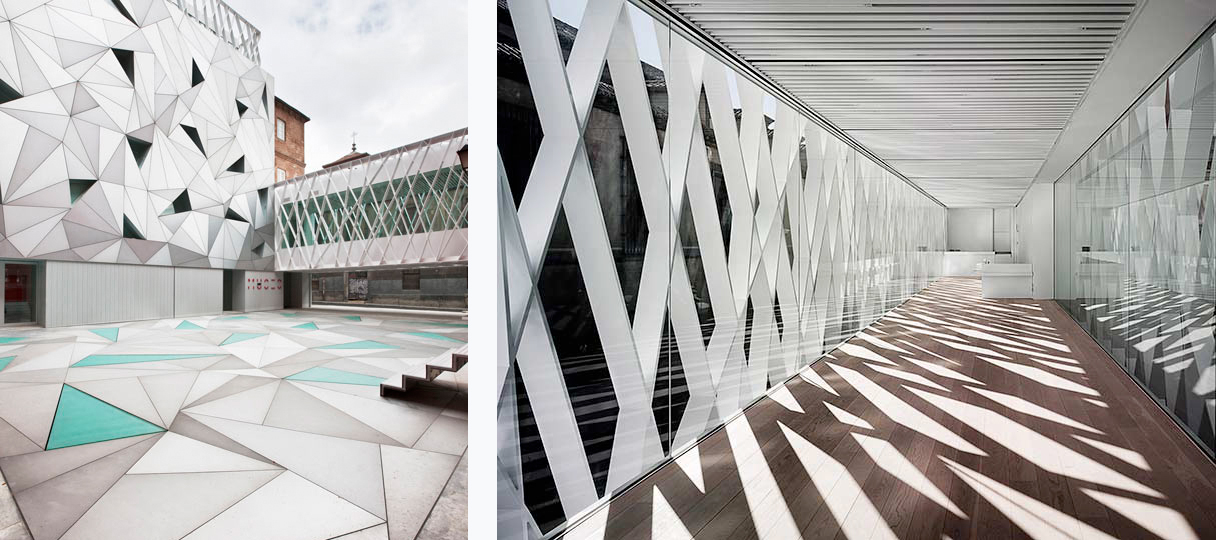
This former brewery, now a gallery, was refurbished by Aranguren & Gallegos in 2011. The six-storey building features an exterior wall of asymmetric glass and steel tiles, which also cover the courtyard, where they serve as skylights to the basement exhibition space. Its interior is clean and minimalist. Museo ABC showcases illustrations and cartoons encompassing more than 100 years of Spanish history from Spain’s oldest existing newspaper, ABC.
Madrid Rio
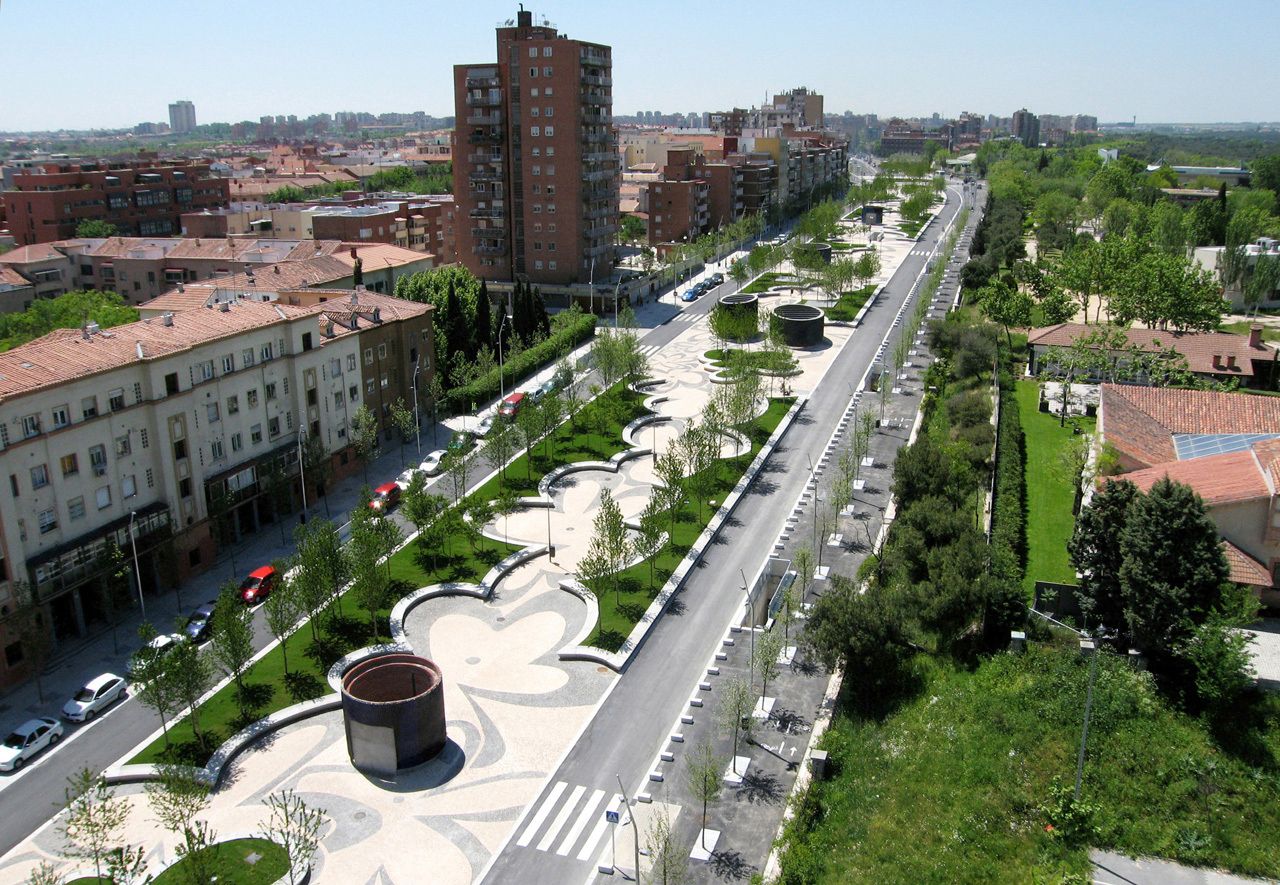
When the city of Madrid buried its motorways in a series of tunnels, the 6 km section that ran along the River Manzanares was reclaimed by Dutch landscape architects West 8, who worked with three Spanish groups – Burgos & Garrido, Porras La Casta, and Rubio & A-Sala. Today, the former road is a park that features seven distinct areas woven together into one large outdoor space of different moods. It’s a diverse and inspiring playground for the city, encompassing pine groves, bike paths, fountains, shaded seating, skate parks and a series of 20 bridges connecting the two banks of the river.
Read next: Lucas Y Hernández-Gil uncork a champagne-inspired restaurant in Madrid




